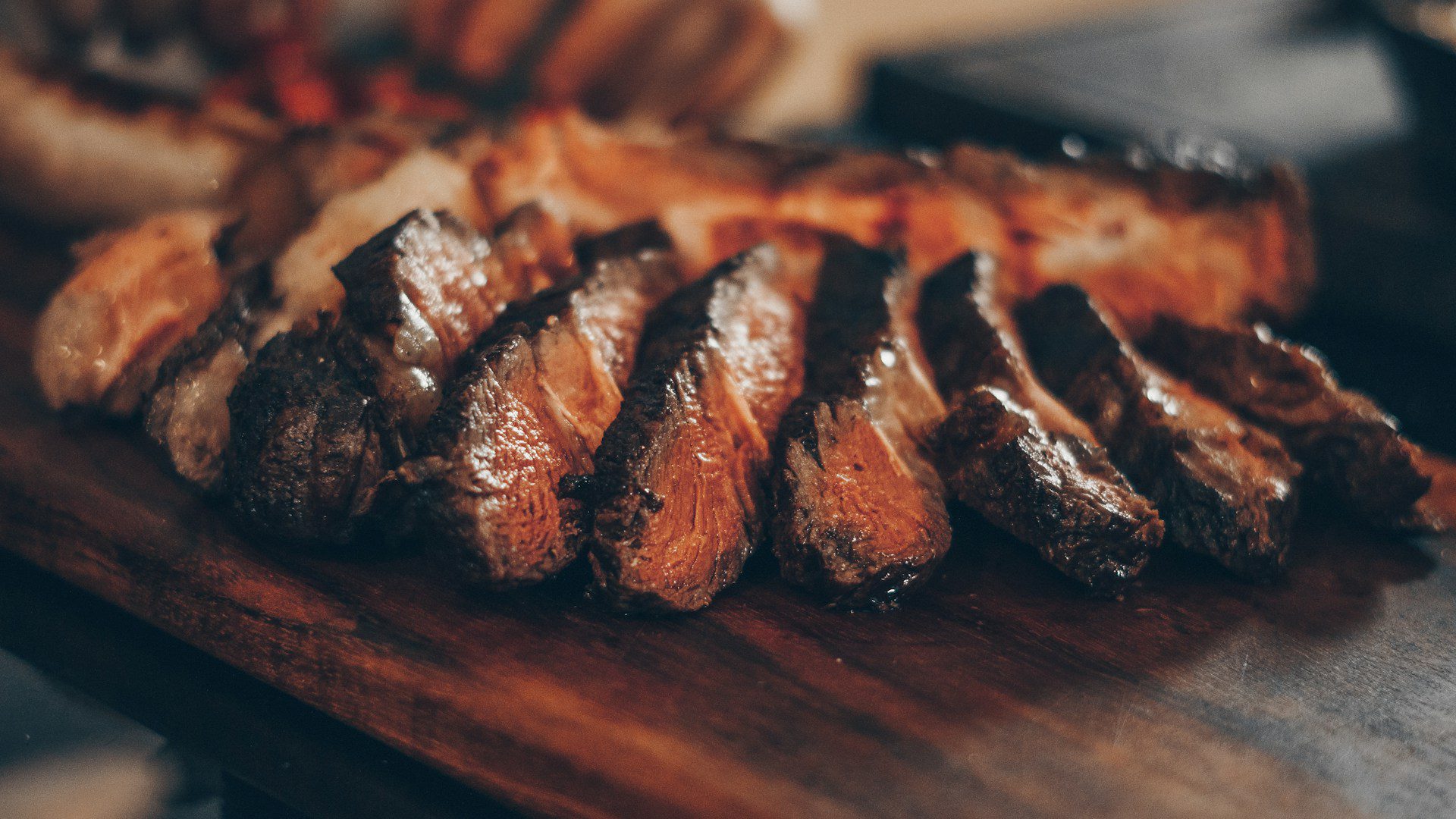The Warrior Diet is a radical shift from the standard three-meals-a-day lifestyle that most of us are used to. Created by fitness expert Ori Hofmekler in the early 2000s, it’s based on the principle of eating one large meal at night and undereating (or fasting) throughout the day. Sounds extreme, right? But here’s the kicker: it mimics how ancient warriors supposedly ate—lightly during the day to stay alert and agile, and heavily at night to refuel after a long day of battle or hunting.
What makes the Warrior Diet so compelling is that it’s not just a diet; it’s a lifestyle. It emphasizes discipline, mental toughness, and aligning with our primal instincts. During the fasting or undereating phase, you’re encouraged to consume minimal calories—think raw veggies, light proteins, and plenty of water, coffee, or tea. Then at night, you eat to your heart’s content, ideally with a focus on wholesome, nutrient-dense foods.
People gravitate toward this plan because of its simplicity, fat-burning benefits, and potential to enhance mental clarity. But it’s not for the faint of heart—it requires consistency and a strong will. So, if you’re tired of calorie counting and ready to tap into your inner warrior, this might just be your nutritional battlefield.
The Origins and History of the Warrior Diet
The Warrior Diet didn’t come out of nowhere. Ori Hofmekler, a former member of the Israeli Special Forces, combined his military background with his studies in nutrition, art, and philosophy to develop this unique eating approach. He noticed that soldiers performed best when they were slightly hungry—more alert, more focused, and more resilient. That observation became the foundation of the Warrior Diet.
Historically, this eating pattern aligns with how our ancestors lived. Early humans didn’t have refrigerators or grocery stores. They fasted during the day while foraging or hunting and feasted at night. This rhythm allowed their bodies to adapt, sharpen their senses, and build endurance. The Warrior Diet mimics this evolutionary template by stressing that periods of controlled hunger are not only safe but beneficial.
In today’s world of food abundance and sedentary lifestyles, the Warrior Diet feels like a return to basics. It strips away the excess and brings you face-to-face with how your body was meant to function. It’s not just about food—it’s about reconnecting with the warrior within.
The Philosophy Behind the Warrior Diet
Fasting and Feasting: The Natural Human Rhythm
Fasting might seem like a modern trend, but it’s actually an age-old survival mechanism. The Warrior Diet capitalizes on this by alternating periods of fasting (or light eating) with a single, nutrient-rich feast. This structure doesn’t just save time—it syncs with our circadian rhythms, the natural cycles that govern sleep, digestion, and hormone production.
Think about it—when you’re slightly hungry, your senses heighten. You become more alert, more efficient, even more creative. That’s your body’s primal programming at work. Then, when it’s time to eat, your digestive system is primed to absorb and utilize nutrients effectively. The Warrior Diet follows this ebb and flow, promoting not just physical health but mental sharpness.
By eating this way, you’re not just feeding your body—you’re training it. You’re building a stronger metabolism, reducing inflammation, and improving insulin sensitivity. You’re also building mental resilience. Anyone can snack all day, but it takes a warrior to wait, to endure, and then to feast with purpose.
Mind-Body Connection in Nutritional Timing
Food isn’t just fuel—it’s information. The timing of when we eat sends powerful signals to our brain and body. The Warrior Diet embraces this concept fully. It leverages the idea that eating lightly during the day can elevate mental clarity, reduce stress on the digestive system, and even enhance longevity.
When you delay your main meal until evening, your body remains in a semi-fasted state for most of the day. This triggers cellular repair processes like autophagy, which clears out damaged cells and boosts regeneration. Simultaneously, your brain benefits from increased production of brain-derived neurotrophic factor (BDNF), a protein that supports cognitive function.
But there’s more. Nutritional timing impacts hormones—particularly insulin, cortisol, and growth hormone. The Warrior Diet helps stabilize these, avoiding the rollercoaster highs and crashes typical of standard eating patterns. The result? More energy, more focus, and a deeper sense of control over your body and mind.
Core Principles of the Warrior Diet
Undereating Phase (Fasting Window)
The undereating phase is the heart of the Warrior Diet. Spanning about 20 hours, this window prioritizes minimal calorie intake and maximized mental clarity. During this time, you should focus on hydration and light, raw foods. Think cucumbers, celery, small amounts of fruits, boiled eggs, or bone broth if needed.
This phase isn’t about starvation—it’s about strategic deprivation. Your body starts to rely on stored fat for energy, initiating a state known as lipolysis. You become more focused, more efficient, and more in tune with your body’s cues. Hunger stops being a problem and becomes a signal—an ally rather than an enemy.
Another key benefit? Enhanced digestive rest. When your system isn’t constantly working to process meals, it has more energy to dedicate to healing and detoxifying. You may notice less bloating, clearer skin, and better sleep.
Overeating Phase (Feasting Window)
Now comes the fun part: the feast. This typically takes place during a 4-hour window in the evening. Unlike traditional diets, the Warrior Diet doesn’t restrict calories in this phase—it’s all about nutrient density. Your plate should be filled with lean proteins, complex carbs, healthy fats, and plenty of colorful vegetables.
But don’t go wild with junk food. The goal isn’t to binge—it’s to nourish. You’re refueling the body after a long day of controlled fasting. The first few bites should be slow and deliberate, activating digestive enzymes and preparing your gut for the full meal.
This phase also reactivates anabolic hormones like testosterone and growth hormone, helping your body rebuild and grow stronger. The balance of fasting and feasting trains your metabolism to be flexible—burning fat during the day and efficiently using nutrients at night.
Benefits of the Warrior Diet
Enhanced Mental Clarity and Focus
One of the most celebrated benefits of the Warrior Diet is its impact on the mind. If you’ve ever felt that post-lunch brain fog, you’re not alone. Traditional eating patterns often lead to blood sugar crashes, sluggishness, and mental fatigue. But when you’re in the fasting window of the Warrior Diet, your brain flips into high gear.
This mental boost is due to a biological phenomenon—when you’re fasting, your body switches from burning glucose to burning fat, producing ketones in the process. Ketones are a clean-burning fuel source for the brain, leading to heightened cognitive performance, better memory retention, and improved concentration.
Many Warrior Diet followers report feeling more “locked in” throughout the day. Tasks feel easier to accomplish. Creative thinking flows more naturally. You’re not distracted by constant hunger or bogged down by digestion. Instead, you experience a kind of mental clarity that can be addictive in the best way possible.
Improved Physical Strength and Stamina
Contrary to what many believe, fasting doesn’t make you weak—it can actually make you stronger. When done correctly, the Warrior Diet can enhance your physical capabilities in a big way. It trains your body to operate efficiently, optimizing energy expenditure and promoting better muscle recovery.
During the undereating phase, human growth hormone (HGH) levels spike, which plays a critical role in preserving lean muscle mass and encouraging fat loss. This is a huge advantage for athletes, bodybuilders, or anyone looking to enhance physical performance.
Additionally, because your body becomes a fat-burning machine, you’ll experience more stable energy throughout the day. No more midday crashes or performance slumps during workouts. Your body learns to draw from its internal energy stores—like a true warrior preparing for battle.
The feasting phase then allows for replenishment and growth. By timing your nutrients strategically, you build strength more efficiently and reduce the risk of overtraining or burnout. It’s a powerful one-two punch for any fitness enthusiast.
Weight Loss and Body Recomposition
The Warrior Diet is incredibly effective for those looking to lose fat without sacrificing muscle. Why? It creates a natural caloric deficit without the need to track every bite. But unlike most diets that simply reduce food intake, this one focuses on when and how you eat.
During the fasting phase, insulin levels drop significantly, which encourages your body to burn stored fat for energy. At the same time, growth hormone levels increase, helping preserve muscle mass. This dual effect leads to what’s known as body recomposition—losing fat while maintaining or even gaining lean tissue.
The evening feast, when done right, replenishes glycogen stores and satisfies hunger, making it easier to stick with the plan long-term. There’s no constant need to count calories or restrict your favorite foods, as long as you stay within the whole-food-based framework.
People often report losing stubborn belly fat, improving muscle definition, and feeling more toned overall. The structure of the Warrior Diet naturally supports long-term weight management and a leaner physique without the pain of crash dieting.
Warrior Diet vs Other Intermittent Fasting Protocols
Warrior Diet vs 16/8 Intermittent Fasting
The 16/8 intermittent fasting method is arguably the most popular version of time-restricted eating. In this plan, you fast for 16 hours and eat during an 8-hour window—usually from noon to 8 PM. While it’s effective and beginner-friendly, it’s less intense than the Warrior Diet, which uses a 20:4 fasting-to-eating ratio.
With the Warrior Diet, your body stays in a fasted state longer, leading to deeper ketosis, more potent fat-burning, and a stronger hormonal response. The longer fasting window also means more time for autophagy and digestive rest. However, the 16/8 method allows for more flexibility and more frequent meals, which some may prefer.
If you’re someone who thrives on structure and discipline, the Warrior Diet will likely offer faster results. But if you’re easing into intermittent fasting or have a busy social calendar, the 16/8 method might be a more sustainable starting point.
Warrior Diet vs OMAD (One Meal A Day)
OMAD—short for One Meal A Day—is the ultimate minimalist eating strategy. As the name suggests, you consume all your daily calories in a single sitting, usually within an hour. It’s similar to the Warrior Diet in its emphasis on prolonged fasting, but it’s even more restrictive.
The main difference? The Warrior Diet allows for a 4-hour eating window, giving you more time to nourish your body and consume a balanced meal. OMAD can be harder to sustain and may lead to nutrient deficiencies if not carefully managed. It’s also more socially isolating since fitting a full meal into one hour can be challenging during events or outings.
The Warrior Diet strikes a balance between the strictness of OMAD and the flexibility of 16/8. It provides more leeway while still offering the metabolic and mental benefits of longer fasting. If you’re looking for something more sustainable but still want fast results, the Warrior Diet hits the sweet spot.
How to Start the Warrior Diet
Beginner Tips for Easing Into the Diet
Jumping headfirst into a 20-hour fast can be overwhelming, especially if you’re used to frequent meals and snacks. That’s why easing into the Warrior Diet is essential. Start by gradually extending your fasting window each day. Maybe begin with a 14:10 split (14 hours fasting, 10 hours eating), then move to 16:8, and eventually to the full 20:4 Warrior-style plan.
During the transition, your body will undergo adjustments. Expect hunger pangs, slight fatigue, or mood changes. These are normal and typically fade within a week or two as your metabolism adapts. Staying hydrated during this phase is crucial. Water, black coffee, herbal teas, and electrolytes will help curb hunger and keep energy levels stable.
Also, plan your meals ahead of time. When your eating window arrives, you want to nourish your body with whole, unprocessed foods. Avoid breaking your fast with junk—this can lead to digestive upset and undo many of the benefits you’ve worked for.
Most importantly, listen to your body. Fasting should feel challenging but not punishing. If you feel lightheaded or weak, adjust your approach. The Warrior Diet is about building strength, not draining it.
What to Eat During the Fasting Phase
You might think fasting means consuming absolutely nothing—but the Warrior Diet offers a more flexible approach during the daytime fasting window. Light, easily digestible foods are allowed in moderation, helping to keep you energized without spiking insulin levels.
Some warrior-friendly options during the fasting phase include:
- Raw vegetables: carrots, cucumbers, celery, and leafy greens
- Small portions of fruit: berries, apples, or a few slices of citrus
- Boiled eggs or a small piece of cheese (sparingly)
- Bone broth: rich in minerals and easy on the stomach
- Black coffee or green tea: both enhance metabolism and suppress appetite
These small, low-calorie snacks can help manage hunger and provide essential nutrients without interrupting the fat-burning and autophagy processes. Just avoid processed snacks, sugary drinks, or anything that would cause a major insulin response.
Keep in mind that the goal is to stay in a fasted (or semi-fasted) state. Eating too much during this window can sabotage your results. Think of it as “active fasting”—you’re still feeding your body, but strategically.
How to Structure the Evening Feast
The evening feast is where the Warrior Diet really shines. This is your time to nourish, rebuild, and reward your discipline. But don’t treat it like a free-for-all. Binging on pizza and ice cream might be fun in the short term, but it won’t serve your goals.
Start your feast with a small salad or broth to activate your digestive system. This “starter” prepares your stomach to handle a larger volume of food. Follow it up with a hearty, nutrient-dense meal that includes:
- A high-quality protein source: chicken, fish, grass-fed beef, or plant-based proteins
- Complex carbohydrates: sweet potatoes, brown rice, quinoa, or legumes
- Healthy fats: avocado, olive oil, nuts, seeds
- A rainbow of vegetables: broccoli, spinach, peppers, and more
Finish with a light dessert or piece of fruit if you like. The key is balance—focus on whole foods that fuel your body and aid recovery. Avoid overeating to the point of discomfort. The goal is to feel satisfied, not stuffed.
Timing matters too. Try to finish your meal at least two hours before bed to give your body time to digest. That way, you’ll sleep better and wake up feeling refreshed—not bloated.
Foods to Include and Avoid on the Warrior Diet
Recommended Whole Foods and Nutrients
The Warrior Diet isn’t about restriction—it’s about intentional eating. During your eating window, you want to pack in as many nutrients as possible. This means focusing on whole, unprocessed foods that are rich in vitamins, minerals, and antioxidants.
Here’s what your warrior plate should ideally include:
- Proteins: Lean meats, eggs, legumes, tofu, fish
- Carbohydrates: Whole grains, sweet potatoes, squash, fruits
- Fats: Olive oil, avocado, nuts, seeds, coconut oil
- Vegetables: Spinach, kale, broccoli, bell peppers, carrots, beets
- Superfoods: Chia seeds, spirulina, turmeric, garlic, ginger
These foods help balance hormones, stabilize blood sugar, and fuel recovery. They also support gut health, which is critical for nutrient absorption and immune function.
Don’t forget hydration. Water should be your best friend throughout the day. Electrolytes—like sodium, magnesium, and potassium—are also essential, especially if you’re sweating or training hard.
Foods That Can Disrupt the Fasting Phase
Even small bites of the wrong food can break your fast and sabotage your progress. During the daytime fasting phase, it’s crucial to avoid anything that significantly raises insulin or blood sugar levels.
Here’s what to steer clear of during fasting hours:
- Sugary drinks: sodas, juices, flavored waters
- Carbohydrate-heavy snacks: chips, crackers, granola bars
- Dairy-heavy items: milk, yogurt, cheese in large amounts
- Refined grains: white bread, pasta, rice
- Artificial sweeteners: many of these still trigger an insulin response
Even a seemingly innocent splash of milk in your coffee can disrupt your fasting state. Stick to black coffee, herbal teas, and water. If you need flavor, a squeeze of lemon or a pinch of Himalayan salt can work wonders.
Staying clean during the fasted phase enhances fat burning, improves hormonal balance, and makes your evening feast even more satisfying. Remember—the real discipline of the Warrior Diet is built during the fast, not the feast.
Sample Warrior Diet Meal Plan
7-Day Warrior Diet Meal Plan
To help you get started, here’s a full 7-day Warrior Diet plan with suggested foods for both the fasting and feasting windows. Keep in mind, flexibility is key—adjust based on your preferences and dietary needs.
Day 1-7 Fasting Window (Daytime Options):
- Water, black coffee, green tea
- Small servings of raw veggies (carrots, cucumbers, celery)
- Handful of nuts or seeds (sparingly)
- Bone broth or a boiled egg if needed
Day 1 Evening Feast:
- Grilled chicken with quinoa and steamed broccoli
- Side of mixed greens with olive oil
- A piece of dark chocolate or fresh berries
Day 2:
- Baked salmon with sweet potatoes and roasted Brussels sprouts
- Spinach salad with walnuts and feta
- Greek yogurt with cinnamon (optional dessert)
Day 3:
- Ground turkey lettuce wraps with avocado
- Brown rice with stir-fried vegetables
- A banana or apple with almond butter
Day 4:
- Grass-fed beef with mashed cauliflower and sautéed spinach
- Quinoa salad with chickpeas, cucumber, and tomato
- A handful of mixed berries
Day 5:
- Shrimp and veggie stir-fry with jasmine rice
- Mixed greens with tahini dressing
- Small serving of dark chocolate or fruit
Day 6:
- Roast chicken with baked sweet potatoes
- Steamed asparagus and arugula salad
- A peach or orange
Day 7:
- Lentil stew with a side of brown rice
- Kale and avocado salad
- A square of 85% dark chocolate
This rotation ensures nutritional variety and keeps things interesting. Prep meals in advance so you’re always ready for your feast.
Recipes for the Warrior Feast
1. Warrior Power Bowl
- Ingredients: quinoa, grilled chicken, avocado, black beans, salsa, lime
- Instructions: Layer cooked quinoa, grilled chicken, and toppings in a bowl. Squeeze fresh lime on top. Serve with a side of roasted veggies.
2. Hearty Warrior Stew
- Ingredients: beef stew meat, carrots, celery, onion, garlic, tomatoes, herbs
- Instructions: Simmer all ingredients in a slow cooker or pot for 4–6 hours. Serve with a slice of sprouted grain bread.
3. Mediterranean Warrior Platter
- Ingredients: hummus, olives, cucumbers, tomatoes, grilled fish or falafel, pita
- Instructions: Plate all ingredients for a finger-food-style feast. Drizzle with olive oil and lemon juice.
These recipes keep your meals exciting, flavorful, and aligned with your goals. You don’t need to be a master chef—just stay consistent.
Common Mistakes and How to Avoid Them
Eating Too Little or Too Much
Finding the right balance during your feasting window is essential. Some people under-eat out of fear of “messing up” their fast, while others overeat like it’s a buffet. Both approaches can derail your progress.
Undereating can lead to fatigue, nutrient deficiencies, and muscle loss. If you’re not getting enough calories, your metabolism may slow down, making it harder to burn fat.
Overeating, on the other hand, can lead to bloating, poor digestion, and weight gain—especially if you’re eating processed foods or sugar-loaded treats.
Fixes:
- Track your food for the first week or two to understand your portions
- Focus on nutrient density over calorie restriction
- Eat slowly, chew thoroughly, and stop when you’re satisfied—not stuffed
Not Staying Hydrated
Dehydration is a sneaky enemy during the fasting phase. Without food, you lose water and electrolytes more quickly. This can cause headaches, brain fog, and fatigue.
How to Stay Hydrated:
- Aim for at least 8–10 glasses of water daily
- Add electrolytes like a pinch of sea salt or use sugar-free electrolyte powders
- Drink herbal teas or bone broth to add variety and nutrients
Being hydrated boosts metabolism, supports detoxification, and makes fasting a whole lot easier. It’s one of the easiest but most overlooked parts of the Warrior Diet.
Is the Warrior Diet Right for You?
Who Should Try the Warrior Diet?
The Warrior Diet can be a game-changer for those who are:
- Looking to lose fat while maintaining lean muscle
- Seeking mental clarity and improved focus
- Interested in a minimalist, structured approach to eating
- Tired of counting calories or micromanaging meals
- Already experienced with intermittent fasting or low-carb eating
It works particularly well for individuals who enjoy structure, discipline, and have control over their evening routines.
Medical Considerations and Who Should Avoid It
Despite its benefits, the Warrior Diet isn’t for everyone. Certain individuals should either avoid it or consult a healthcare provider before starting.
Avoid if you:
- Are pregnant or breastfeeding
- Have a history of eating disorders
- Suffer from adrenal fatigue or extreme stress
- Are on medications that require food throughout the day
- Are underweight or struggling with nutrient deficiencies
Always talk to your doctor if you have chronic conditions like diabetes, blood pressure issues, or thyroid imbalances. Your safety comes first.
Scientific Evidence Supporting the Warrior Diet
Research on Intermittent Fasting
Intermittent fasting has gained scientific traction in recent years. Studies suggest it improves insulin sensitivity, reduces inflammation, and supports cellular repair processes like autophagy.
A study published in the New England Journal of Medicine highlighted the benefits of time-restricted eating, including improved cardiovascular health, reduced risk of cancer, and better brain function.
The Warrior Diet, with its extended fasting window, may enhance these effects even more. Long fasts stimulate deeper autophagy, increase metabolic flexibility, and promote hormone balance—especially HGH and testosterone.
Hormonal and Cellular Benefits
Hormones are the secret weapons of the Warrior Diet. When you fast, insulin levels drop, making it easier for your body to tap into fat stores. Growth hormone surges, which helps protect muscle mass and burn fat more efficiently.
Cellular repair also ramps up. Fasting triggers autophagy, where your cells clean house—removing damaged components and reducing your risk of age-related diseases.
The net effect? A body that performs better, looks leaner, and resists disease. Your cells regenerate faster, your hormones optimize, and you feel more in control.
The Warrior Mindset
Mental Resilience Through Controlled Hunger
Fasting isn’t just a physical challenge—it’s a mental one. It forces you to confront hunger, cravings, and emotional eating. That’s why following the Warrior Diet builds not just muscle, but mental grit.
When you train your body to go hours without food, you’re also training your mind to resist instant gratification. This builds patience, focus, and resilience—qualities every warrior needs.
Over time, your relationship with food transforms. You no longer eat out of boredom or emotion. You eat with purpose, intention, and clarity.
Cultivating Discipline and Focus
Discipline is like a muscle—it gets stronger the more you train it. By following the Warrior Diet, you develop habits that ripple into every area of life: better sleep, clearer thinking, stronger workouts, and more confidence.
This is more than a diet—it’s a mindset. You learn to delay gratification, push through discomfort, and stay laser-focused on your goals. The food is fuel, and your discipline becomes your superpower.
Real-Life Success Stories
Transformations with the Warrior Diet
Thousands of people worldwide have adopted the Warrior Diet and experienced jaw-dropping transformations. From shedding 50+ pounds to gaining visible abs to reversing pre-diabetes—the testimonials are powerful.
Most report increased energy, sharper focus, and more confidence. They no longer obsess over food or feel trapped in yo-yo diets. Instead, they feel empowered and in control.
Interviews and Testimonials
People from all walks of life—executives, athletes, students, and busy parents—have found success with the Warrior Diet. One user said, “It gave me my life back. I have more time, more energy, and less stress around food.”
Another remarked, “For the first time, I feel connected to my body. I know when I’m truly hungry and when I’m just bored.”
Their stories prove the Warrior Diet isn’t just a trend—it’s a revolution.
Conclusion
The Warrior Diet is not just an eating plan—it’s a lifestyle that taps into your primal instincts for strength, clarity, and resilience. By embracing fasting, feasting, and focused discipline, you align your body with how it was truly designed to function. Whether you’re chasing fat loss, mental sharpness, or a complete lifestyle overhaul, the Warrior Diet offers a powerful path to personal transformation.
It’s not always easy, but nothing worth having ever is. The Warrior Diet teaches you how to eat less often, live more fully, and think more clearly. So, are you ready to reclaim your inner warrior?
FAQs
1. Can I drink coffee during the fasting window?
Yes, black coffee is allowed and even encouraged. It can suppress hunger and enhance mental focus.
2. How soon will I see results on the Warrior Diet?
Some people notice changes within a week—especially in energy and focus. Visible weight loss usually starts within 2–3 weeks.
3. Is it okay to work out while fasting?
Absolutely. Many find their workouts improve during the fasted state. Just stay hydrated and adjust intensity based on your energy levels.
4. Can women do the Warrior Diet safely?
Yes, but women may need to be more flexible with fasting windows, especially around their menstrual cycles or during high-stress periods.
5. How is the Warrior Diet different from Paleo or Keto?
The Warrior Diet focuses on meal ti








